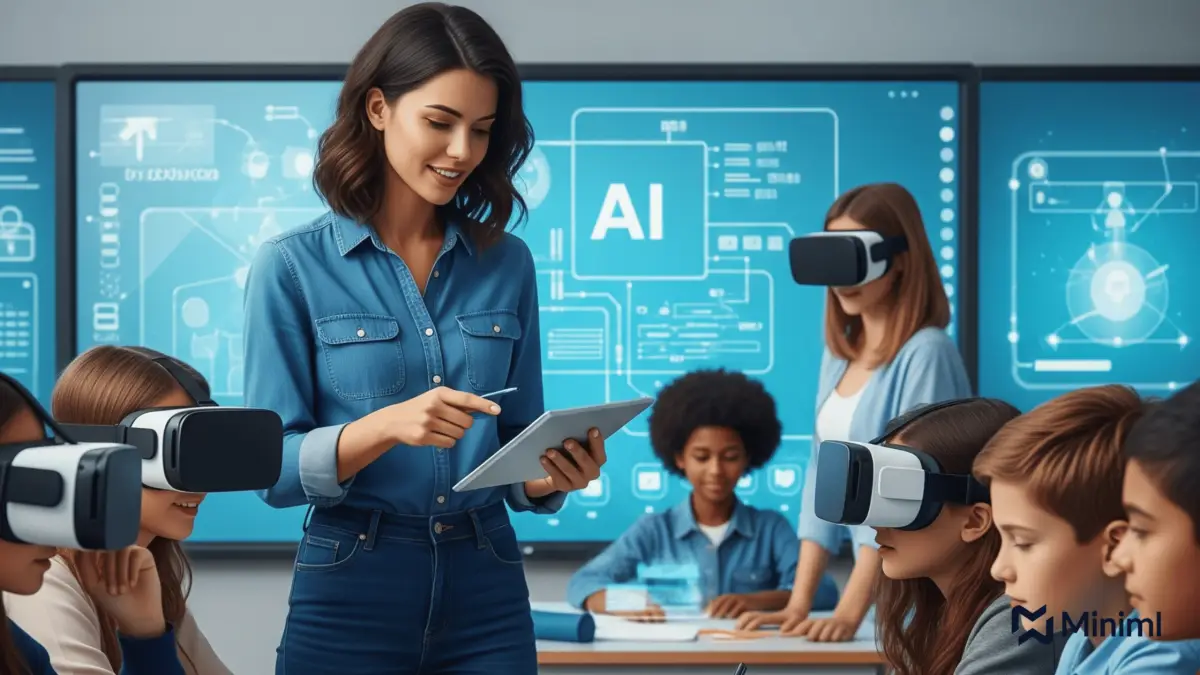Artificial intelligence has evolved from processing a single type of data like text or images to interpreting and combining information from multiple sources. This new capability is known as multimodal AI, and it’s becoming a driving force behind some of the most advanced AI applications we see today. From healthcare diagnostics to fraud detection in finance, multimodal AI offers a more complete understanding of complex problems by analyzing different data formats together.
For businesses, understanding multimodal AI is more than just keeping up with trends it’s about identifying where this technology can be applied to improve decision-making, customer experience, and operational efficiency.
Multimodal AI
At its core, multimodal AI refers to systems that can process and analyze more than one type of input data at the same time. This could be a combination of:
- Text and images
- Video and audio
- Sensor data and numerical inputs
- Any other pairing or grouping of data types
For example, a medical AI tool might analyze an MRI scan (image data) alongside a patient’s medical history (text data) to arrive at a more accurate diagnosis. Similarly, a retail recommendation engine could use product photos, customer reviews, and purchase history to suggest the most relevant items.
Traditional AI models often excel at one type of data, but they can miss context that comes from combining multiple sources. Multimodal AI bridges that gap, creating a fuller and more accurate understanding.
How Multimodal AI Works
To make sense of multiple data formats, multimodal AI systems follow a structured approach:
1. Gathering Multiple Data Inputs
The process begins with collecting data from different sources such as voice recordings, images, documents, or IoT sensors.
2. Data Fusion
Here, the system aligns and merges the various types of data. This may involve converting them into a shared format or embedding them in a common representational space so the AI can process them together.
3. Contextual Analysis
Once combined, the AI examines the relationships between the inputs. For example, it might connect a person’s spoken description of a product with an image of that product to understand intent.

4. Output Generation
Finally, the AI produces results based on the combined insights whether that’s a recommendation, a prediction, or an action.
Key Advantages of Multimodal AI
While the technical details can be complex, the practical benefits are clear. Businesses and organizations choose multimodal AI for its ability to deliver:
- Better Accuracy – Combining multiple data streams often leads to more reliable results.
- Richer Insights – Context from different sources helps uncover details that a single data type might miss.
- More Natural Interactions – Systems can interact in ways that resemble human communication, using voice, visuals, and text together.
- Broader Applications – Useful across industries, from diagnosing patients to detecting security threats.
Real-World Applications of Multimodal AI
Multimodal AI isn’t a distant concept it’s already shaping industries in meaningful ways.
Healthcare
Medical professionals are using multimodal AI to combine imaging scans, lab results, and patient notes. This allows for earlier and more precise diagnoses. For example, detecting early signs of cancer can be more accurate when MRI images are analyzed alongside clinical data.
Finance
Banks and payment providers can detect fraud by looking at transaction patterns (numerical data), location tracking (geospatial data), and customer communication records (text data). This layered approach helps spot suspicious activities faster.
Retail
Online shopping platforms use product images, user-generated content, and customer purchase histories to make highly relevant recommendations. This not only improves customer satisfaction but also drives repeat purchases.

Education
E-learning tools combine written lessons, video lectures, and voice interactions to create engaging and adaptive learning experiences. Students benefit from personalized content that responds to their learning style.
Challenges in Implementing Multimodal AI
While promising, multimodal AI comes with its own set of challenges that businesses need to address:
- Data Integration – Different formats must be aligned for the AI to process them effectively.
- Data Quality – Poor-quality inputs can reduce accuracy, no matter how advanced the model.
- Infrastructure Requirements – Processing multiple data types requires significant computational power.
- Privacy and Compliance – Especially in industries like healthcare and finance, strict data handling rules must be followed.
The Future of Multimodal AI
The growth of multimodal AI is closely tied to advancements in natural language processing, computer vision, and speech recognition. We’re already seeing AI assistants that can respond to voice commands, interpret images, and provide written feedback all in one interaction.
In the near future, we can expect deeper integration with technologies like augmented reality (AR), virtual reality (VR), and the Internet of Things (IoT). This will make multimodal AI even more immersive and interactive.
How Miniml Helps Businesses Implement Multimodal AI
At Miniml, we specialize in designing AI solutions that meet the specific needs of each client. For businesses exploring multimodal AI, our process typically includes:
- Understanding Your Data Landscape – Identifying what types of data you have and how they can be combined.
- Building Custom Models – Creating systems capable of analyzing your unique combination of inputs.
- Ensuring Security and Compliance – Protecting sensitive information while meeting industry regulations.
- Scaling for Growth – Designing solutions that can expand as your needs evolve.
Our work spans healthcare, finance, retail, and education industries where the ability to interpret multiple data types can lead to smarter decisions and improved outcomes.

Conclusion
Multimodal AI represents a significant step forward in artificial intelligence’s ability to understand the world in a way that’s closer to human perception. By combining text, images, audio, and other data types, it delivers richer insights and more accurate results.
For organizations, the opportunity lies in identifying where this technology can be applied to improve services, reduce risks, and stay ahead in competitive markets. With the right expertise, implementing multimodal AI can turn complex challenges into clear, actionable solutions.
If your business is ready to explore what multimodal AI can do, Miniml can guide you through every step from concept to deployment ensuring that your investment leads to measurable results.








